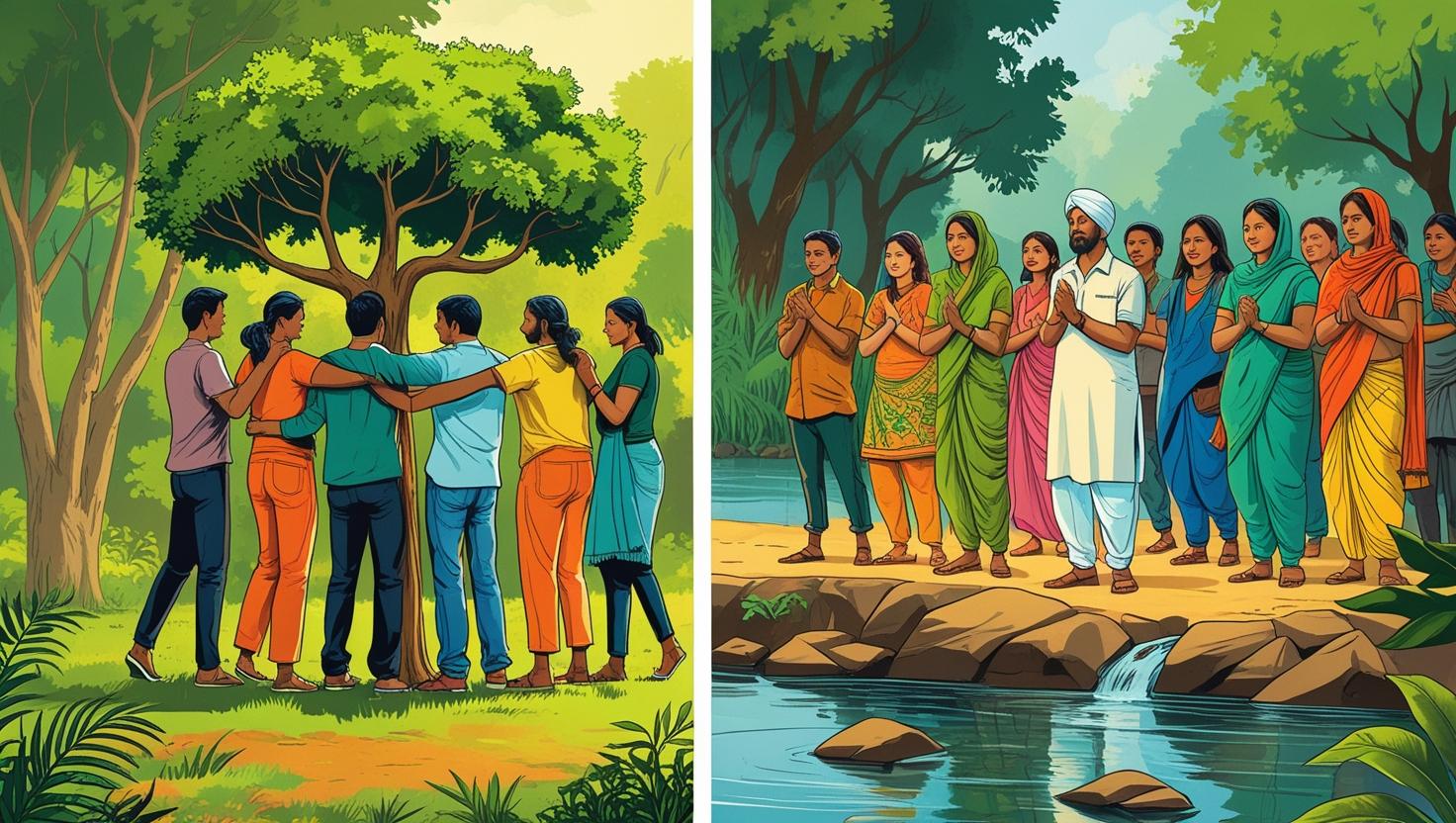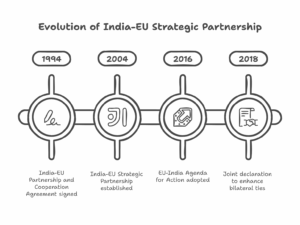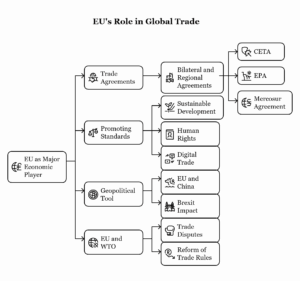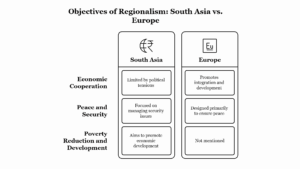Civil society in India has played a vital and often pioneering role in environmental protection by mobilizing public opinion, challenging unsustainable development, conserving biodiversity, and advocating for the rights of marginalized communities. These movements have not only addressed local ecological issues but also contributed to national and global discourses on environmental justice, sustainability, and participatory governance. Among numerous notable efforts, two initiatives stand out for their long-lasting impact and grassroots strength: the Chipko Movement and the Narmada Bachao Andolan.
1. The Chipko Movement (1973 onwards)
The Chipko Movement is one of the earliest and most iconic examples of environmental activism in India. It emerged in the early 1970s in the Uttarakhand region (then part of Uttar Pradesh), where local communities, especially women, protested against commercial deforestation by physically hugging trees—hence the term “Chipko”, meaning “to cling” in Hindi.
Origin and Objectives: The movement began in the village of Mandal in the Chamoli district in 1973, under the leadership of environmental activists such as Sunderlal Bahuguna and Chandi Prasad Bhatt. Villagers were outraged by the government’s decision to allow private contractors to fell trees for commercial purposes, while denying locals access to forest resources essential for their livelihood, such as firewood and fodder.
Impact:The Chipko Movement was instrumental in halting deforestation in several parts of the Himalayan region. It drew national and international attention to the importance of forest conservation, especially in ecologically sensitive areas. The movement not only highlighted the link between environmental degradation and rural poverty but also brought women to the forefront of ecological activism. As a result of sustained protests, the government imposed a 15-year ban on green felling in the Himalayan forests of Uttar Pradesh in 1980.
Legacy: The Chipko Movement is regarded as a precursor to India’s environmental movement. It successfully advocated for decentralized forest management and laid the groundwork for later policies on participatory forest governance and community forestry.
2. Narmada Bachao Andolan (NBA) (1985 onwards)
The Narmada Bachao Andolan (Save the Narmada Movement) is another prominent civil society initiative that combined ecological concerns with issues of displacement, human rights, and sustainable development. It was launched in the mid-1980s to oppose the construction of large dams on the Narmada River, especially the Sardar Sarovar Dam, which threatened to displace hundreds of thousands of tribal and rural people and submerge large tracts of forests and fertile land.
Leadership and Strategy: The movement was led by social activists such as Medha Patkar, Baba Amte, and others, who mobilized affected communities and engaged in legal, political, and grassroots advocacy. NBA challenged the development model that prioritized large-scale industrial projects over human and environmental costs. The movement argued that big dams were not only ecologically harmful—causing deforestation, biodiversity loss, and soil erosion—but also socially unjust, as they disproportionately affected indigenous people without adequate rehabilitation.
Achievements: The NBA brought the debate on “development versus displacement” into mainstream discourse. It succeeded in drawing global attention, leading to the withdrawal of funding by the World Bank in 1993 due to concerns over inadequate resettlement and environmental impact assessments. The Supreme Court of India, while eventually allowing the dam’s construction to proceed under certain conditions, acknowledged the significance of proper rehabilitation and environmental clearance.
Legacy: Although the dam was completed, the NBA remains a symbol of resistance against unchecked developmentalism. It emphasized the importance of participatory development, transparency in environmental impact assessments, and the rights of indigenous communities. It also inspired numerous other environmental and rights-based movements across India.
Conclusion:
These two civil society initiatives—Chipko and NBA—demonstrate how grassroots activism can challenge state policies, demand ecological accountability, and reshape development paradigms. They underscore the role of civil society not just as a watchdog, but as an active participant in the formulation of a more just, equitable, and ecologically sustainable India. Their legacies continue to inspire newer generations of environmental activists, community leaders, and policymakers.








Leave a Reply